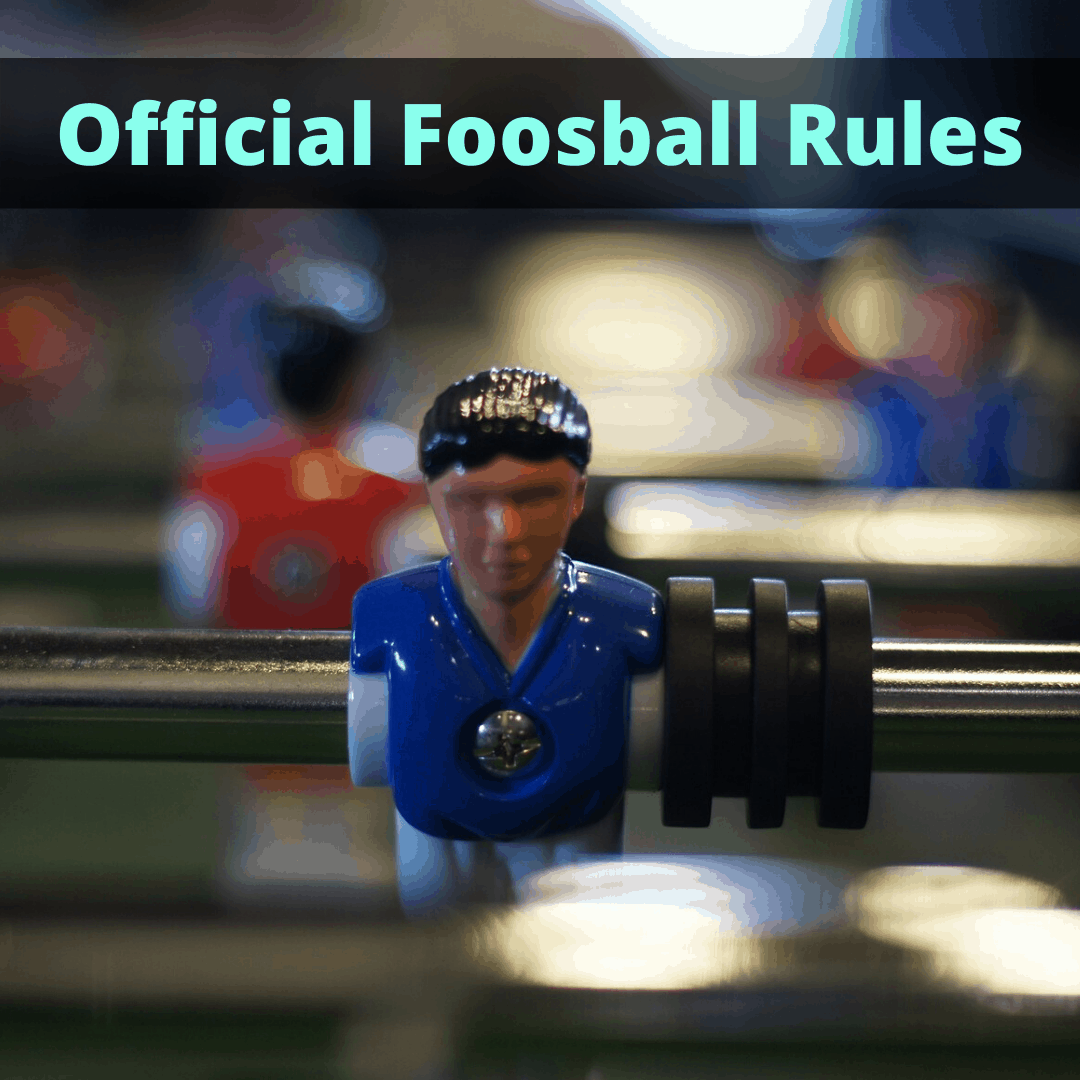 Foosball, Fuzboll, table football.
Foosball, Fuzboll, table football.
The many names it goes by tells us just how widely played this table-top soccer game is.
Foosball, much like the game of soccer where it was originally based on, is played and loved all around the world.
Unfortunately, unlike soccer, there are just as many rule variations as there are name variations of the game.
Different countries and sanctioning bodies have their own versions of the rules.
Since covering all these rules is next to impossible, we will focus on the universal and most important official rules as sanctioned by the most recognized foosball organizations, the International Table Soccer Federation (ITSF) and the United States Table Soccer Federation (USTSF).
Playing Foosball
As with the rules, both the table size and the player layout can vary a bit. However, a typical table is 4 feet long by 2 feet wide.
We actually reviewed a lot of foosball tables on the market and all of the best foosball tables that we found are about 4 feet long.
Just like in an actual game of soccer, 11 players are on each team on the table. The players or “foosmen” are spread over 8 rods, of which each player controls 4.
The players are mounted on the rods in different formations, depending on the table style. Your players on an ITSF sanctioned competition table will be set out as follows: 1 goalkeeper, 2 defenders, 5 midfield players and 3 attackers.
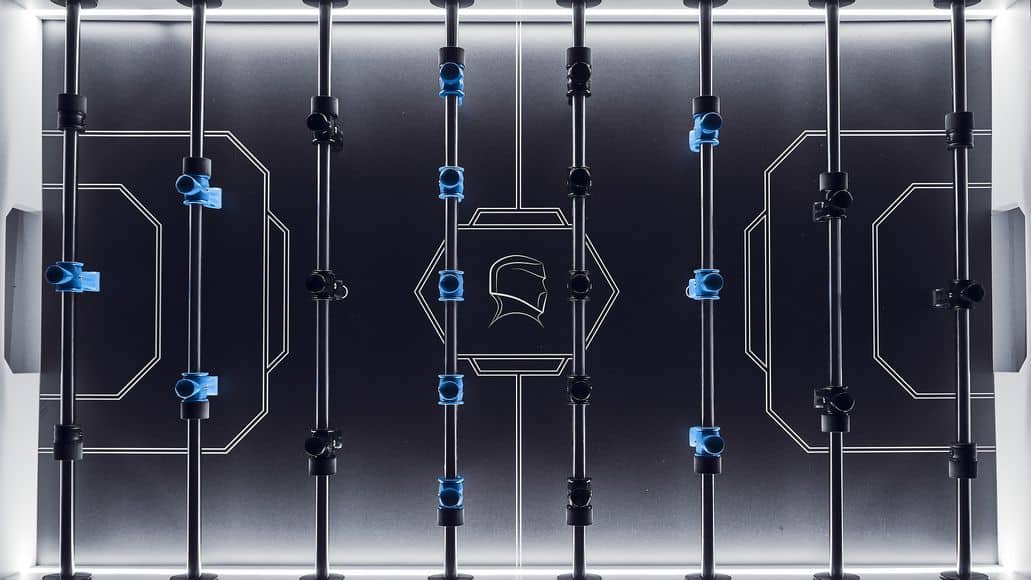
The rods are identified and named after the number of players mounted on them. For example, the middle rod from the above formation is called the “5-bar” since it controls 5 players.
As mentioned, those numbers can vary a bit. Some tables will even feature more than one player on the goalkeeping rod.
Foosball can be played in singles or doubles format. For doubles, each player takes control of 2 rods.
The aim of the game is just like a standard soccer match, to outscore your opponent.
The most common scoring system is to play until one player reaches 5 goals. That player then claims the game.
Multiple games can be played to decide the match.
We have already discussed the variation in some of the rules of foosball, depending on the federation, country, and type of table you are playing on.
However, there are some very important rules that are pretty much universal. We will take a more in-depth look at the most important official foosball rules below.
The rules listed below are official rules used in ITSF and USTSF sanctioned competitions and apply to most other competitive foosball matches.
Service
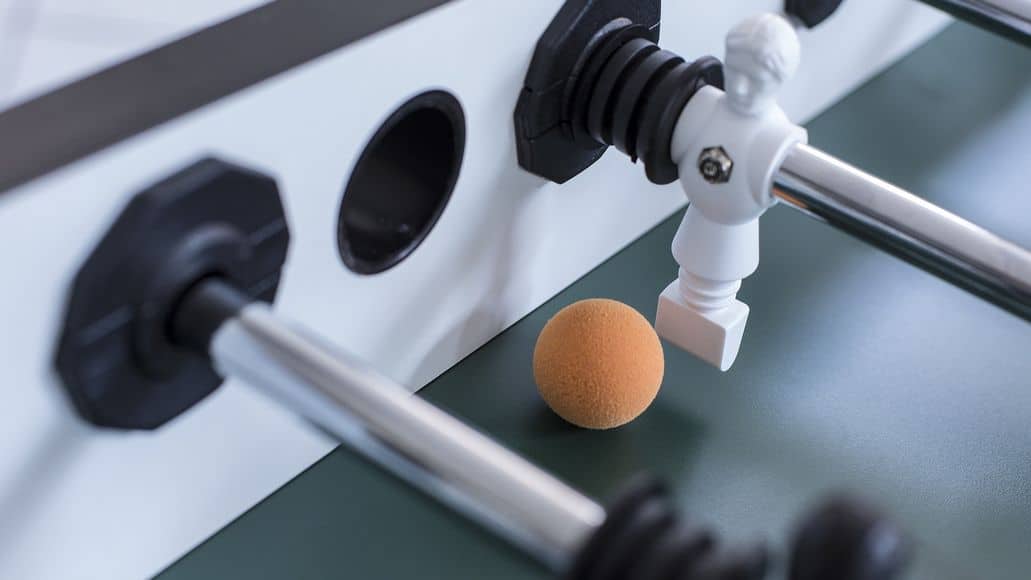
To begin the game, the ball must be served by one of the players. Most tables feature a hole in the sidewall that is exactly in line with the center of the table. The server passes the ball through this hole to begin the game.
If you are playing on a table with no service hole, the server places the ball at the feet of one of his or her midfield players and the game begins from there.
Once a goal has been made, the player or team that is scored upon restarts the game by serving the ball.
Dead Balls And Out Of Play
A “dead ball” is called when the ball stops completely and is unreachable by any of the players.
If the ball becomes dead directly between two rods from opposing teams, the ball is picked up and reserved by the previous serving player.
On the occasion where a ball becomes dead between the goalkeeper and the rod of defending players, the ball must be picked up and put back into the closest possible position that it can be played from.
This defensive rule is in place to prevent defending players from forcing a re-serve by deliberately rolling the ball into a dead position.
Dead balls are the only time that players are allowed to reach into the table of play and touch the ball.
If the ball is struck off of the table, the ball is simply picked up a re-served by the previous server.
Scoring
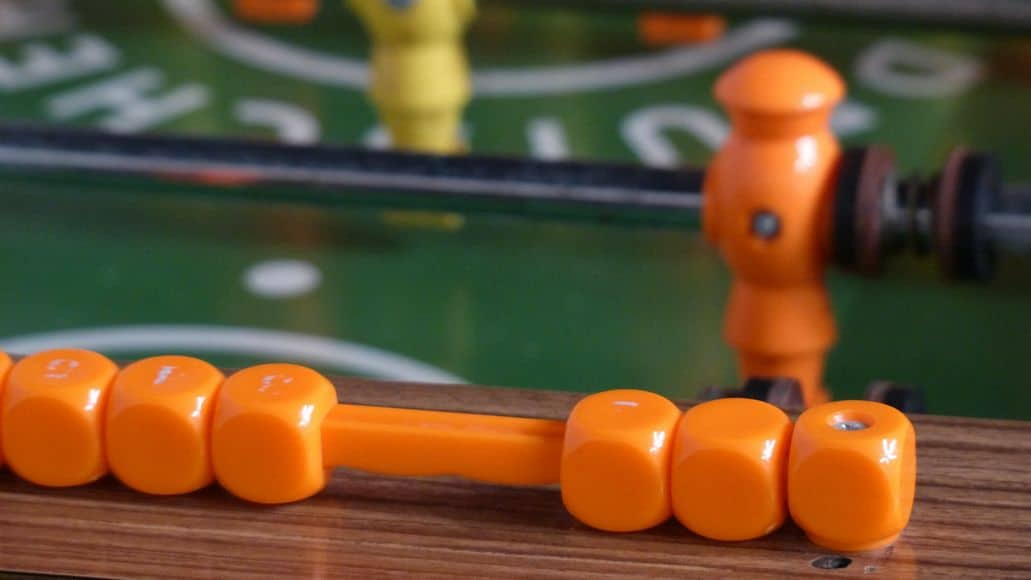
To win a game of foosball in a sanctioned competition, players play to be the first to score 5 goals past their opponent. A goal is scored when the ball passes over the goal-line.
If the ball passes the goal line and rebounds back onto the table, the goals stands.
It does not matter which player the ball touches last before it enters the goal. What does matter is that a player must touch the ball after a serve for a goal to be counted. A ball that goes into the goal directly from a serve will not count.
The total number of games is usually best 2 out of 3 or best 3 out of 5 games in official competitions.
No Spinning
This is a big one and probably the most well-known rule in foosball. Spinning refers to a player rotating the rod a full 360 degrees, usually in a fast and aggressive fashion.
This is strictly forbidden as it takes away some of the skill that is involved in the game.
The rule also says that players must be in complete control of their handle at all times. Spinning the rod means you no longer have proper control of it.
The punishment for a spinning foul is to surrender possession back to your opponent. Your opponent gets the ball on his 5-rod, which is the midfield rod.
No Jarring
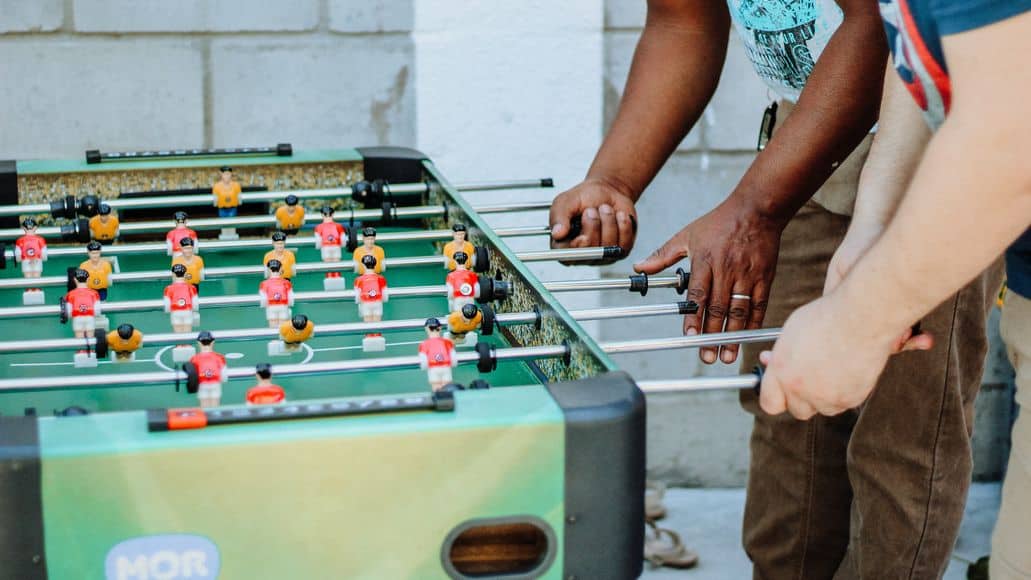
Jarring is the act of slamming your rod hard into the table in an effort to move the ball in your favor.
Absolutely no jarring is permitted at any time during play.
It is important to differentiate jarring from simply sliding the rods back and forth to position your players. It is only a jarring offense when the rod is pushed with enough force to actually move the ball or put the opposition off.
The punishment for a jarring foul is to give possession away to your opponent. They can choose to replace the ball to where it was before the table was jarred or they can pick the ball up and take possession at their 5-rod instead.
If you are called for jarring a second time, a harsher punishment awaits. Your opponent receives a penalty shot from his 3-man rod, the attacker’s rod.
5-Bar Passing Rules
The rules for the 5-bar are slightly different when it comes to passing the ball.
The first rule is that you only have 10 seconds to pass the ball from the 5-bar to your 3-bar directly following a serve.
After a serve, you have 15 seconds to play a pass from your 5-bar.
Secondly, a ball that is stopped or pinned against a wall by a player on your 5-bar, cannot be played forward to your 3-bar until it has touched a total of 2 men on the 5-bar first.
In addition to this rule, the ball must not touch the wall more than twice before it touches another player on the 5-bar.
The penalty for breaking these rules is a loss of possession. Your opponent takes control of the ball at his own 5-bar.
Foosball Rules: Conclusion
As you can now see, foosball is a game of quite complicated rules. The fact that it is such a widely-played game makes for a great deal of rule variation.
The rules that have been set out above are the most important official foosball rules. They will come in handy regardless of the tournament venue or organizing body.
It is always recommended that all players study the official rules before match day.
This way, any kind of conflict will be averted. All that there is to expect is a fair and fun game.
Leave a Reply